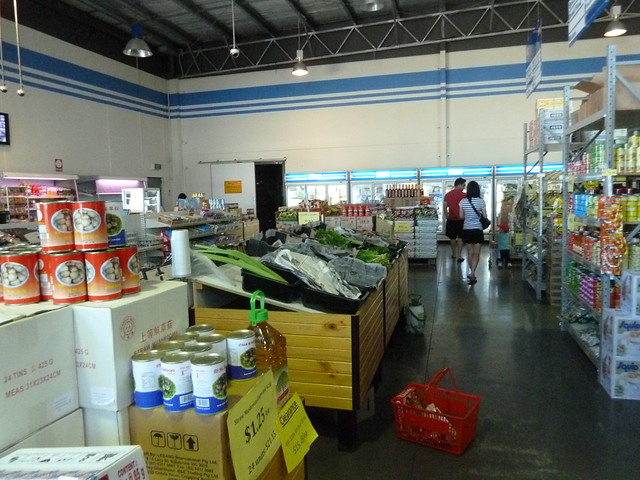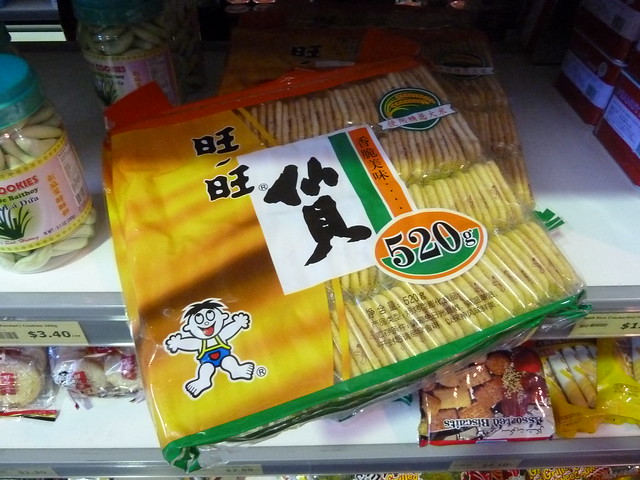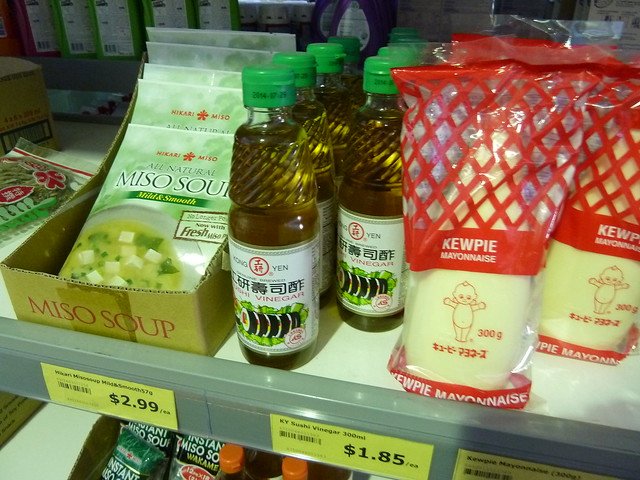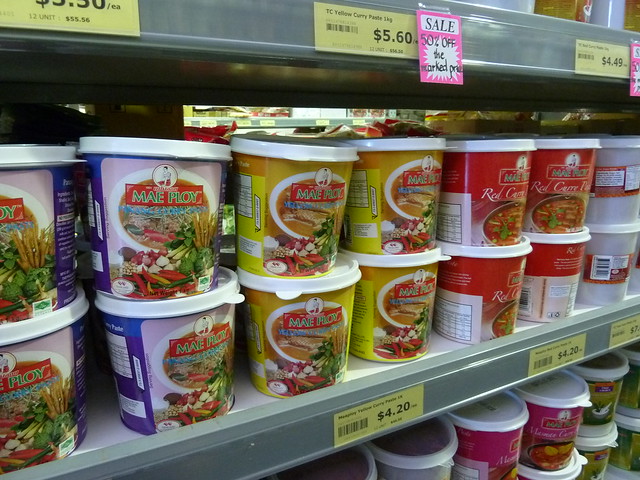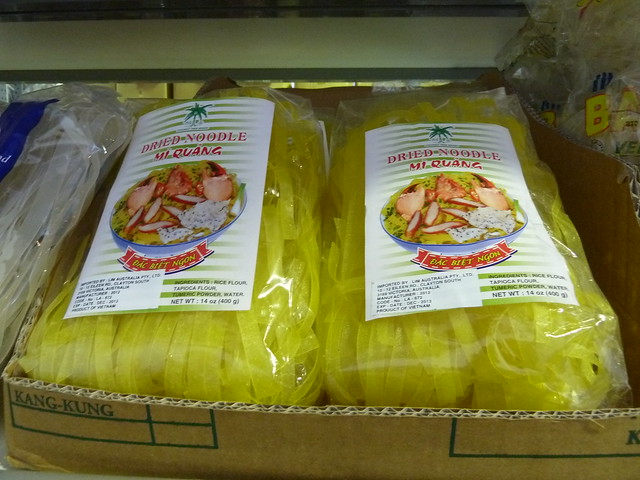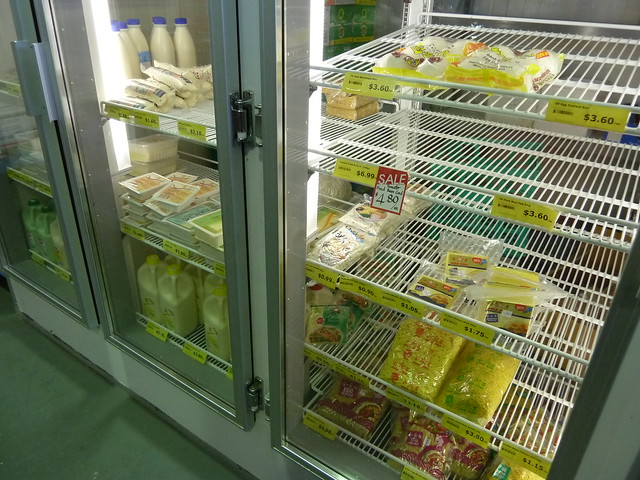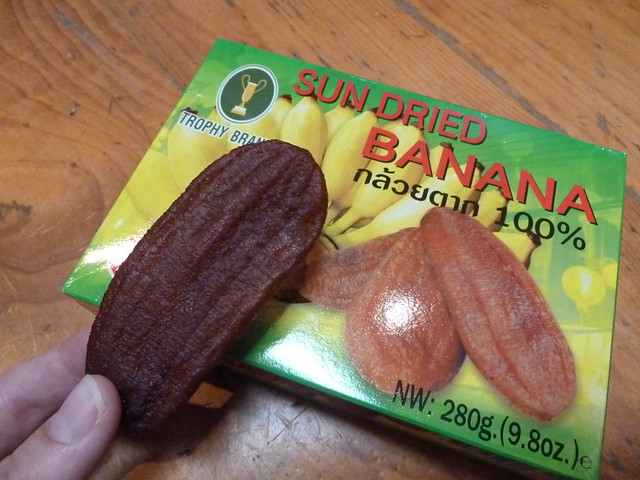I shouldn't say this about Footscray, but the parking situation really gives me the irrits. It's so hard to just duck down for something when you spend half the time circling looking for a spot and then having duels over parking spaces. A great alternative for Asian groceries is Annam on the West Footscray/Braybrook border.
I remember when Minh Phat opened in Richmond. It was bright inside, had long aisles and it was so easy to find things. Sometimes it's fun to rummage but other times you just want to grab and go without playing Where's Wally with the kecap manis.
Annam is spotlessly clean and very well organised. There are a few gaps in the range (NO CRISPY PRAWN CHILLI) but it's got most of the bases covered...
....like giant packets of my favourite (MSG-coated) crackers. I don't know if they still are, but they used to be called "Want Want" brand crackers. You have one and then you just waaaant waaaant moarrrrr.
A small but respectable Japanese section. Did you know Ebi are now doing a range of Japanese groceries including Japanese (ie, not the expensive Spiral Foods one I buy) dashi stock with no MSG?
These Mae Ploy pastes are quite decent, last for ages and here are $4.20 for a 1 kg tub!!! The photo doesn't really give the scale.
Among many, many others, turmeric noodles for Mi Quang, a half soup/half noodle dish. Footscray's Sen have an unreal version, the photo of which I cannot find, which is odd because I file all my photos so meticulously.*
*Lie.
Oh happy day - a small but neat and tidy noodle and tofu selection. I am so over buying chow mein-style yellow noodles (good for Grandpa's special noodles) and having them go mouldy long before the use-by date, which happens far more often than it should.
Fresh herbs and leafy veg, covered this day with wet newspaper to keep them fresh. See here hard-to-find rice paddy herb and sawtooth coriander! See these in action at a Saigon pho shop, thanks to Bryan (@fatbooo).
All of this for under $16. Don't bother with this rice wine - they didn't have any shao hsing wine and it isn't a substitute. I will try using it for cooking sake in Japanese recipes. I like this Yenson's ready-fried tofu for stir-fries, salads, rice paper rolls - anything really. Wontons are for wontons and tamarind for tamarind paste for proper pad thai.
These are banana crack. They are tiny Thai bananas, dried yet still so moist. I am addicted!
There's a freezer section to cruise too and Annam also sell a small range of chicken cuts, so you really can get everything there. Just... Hands off the bananas. They're all mine.
Annam Supermarket
1/75a Ashley Street, Braybrook
Phone: 9687 3330
Hours: TBC
View Footscrayfoodblog reviews in a larger map
1/75a Ashley Street, Braybrook
Phone: 9687 3330
Hours: TBC
View Footscrayfoodblog reviews in a larger map



